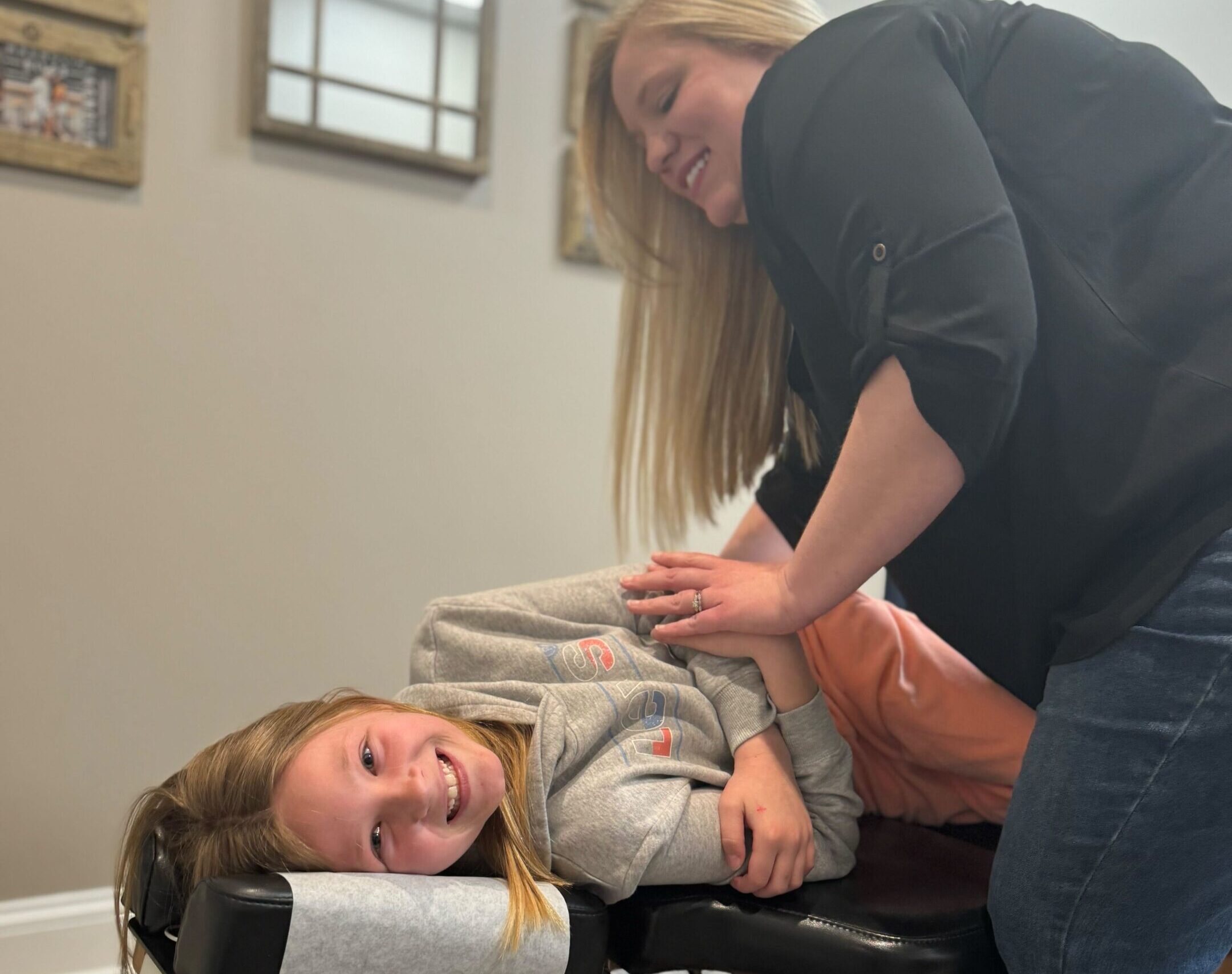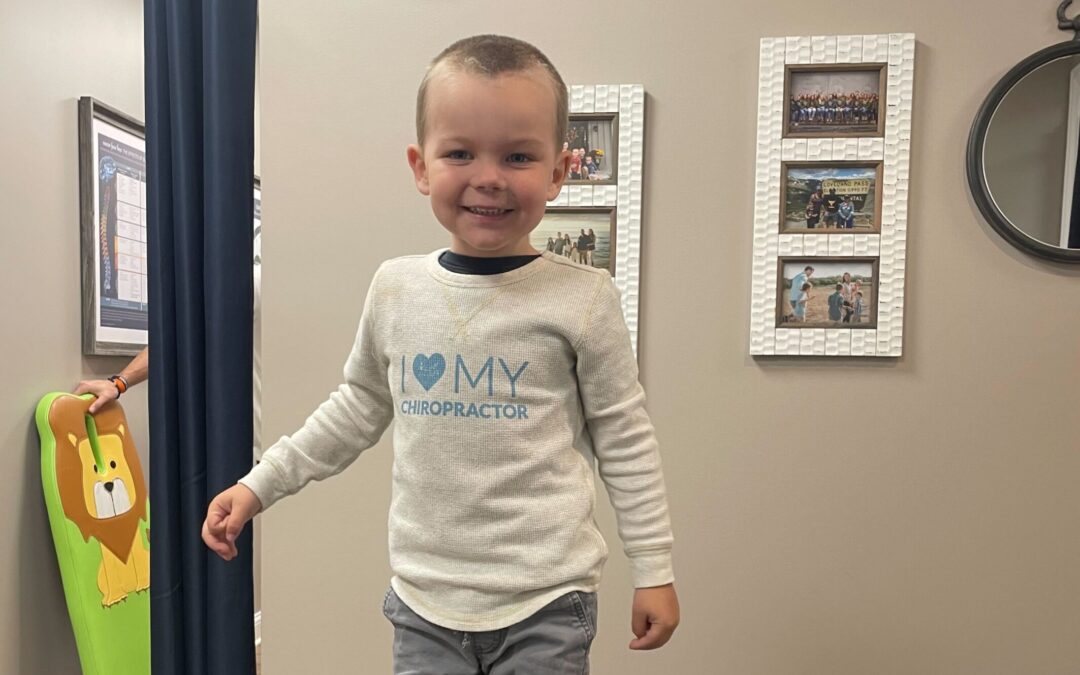Do you feel stressed? Chances are you do, since 75% of Americans regularly experience stress, according to the APA.
For countless overstressed parents in today’s world, no matter how hard they try to prioritize sleep, regularly attend yoga classes, download another meditation app on their phone, or counteract their constant stress with things like magnesium, melatonin, and now maybe even an infrared sauna and daily cold plunges, they still struggle with nonstop stress.
This all-too-common issue arises when your sympathetic nervous system—responsible for the “fight or flight” response—turns into an overstimulated and overactive nervous system. Anxious thoughts, demanding workloads, lack of sleep, and even hidden factors like food sensitivities can sustain the activation of this stress pathway. In turn, your parasympathetic “rest, digest, and regulate” system struggles to function properly to calm your body and mind.
Left unchecked, the everyday symptoms of irritability, indigestion, and insomnia can progress into chronic conditions like blood pressure problems, inflammatory disorders, burnout, and mood imbalances.
Understanding the cause of nervous system dysfunction and how to restore balance without medication is key to regaining control.
Let’s explore the impacts of an overactive nervous system and discuss natural and drug-free care options that get to the root cause and help patients of all ages find relief and an improved quality of life. This article emphasizes the importance of addressing these root causes to achieve optimal nervous system function and lasting wellness instead of just silencing symptoms.
What is an Overactive Nervous System?
Your nervous system acts as mission control, coordinating bodily activities like breathing, digestion, immunity, and more. This complex communications network has two main divisions:
- Sympathetic Nervous System: Activates the “fight or flight” response when you face anything demanding or dangerous. Think of it as your gas pedal.
- Parasympathetic Nervous System: Triggers “rest, digest and regulate” mode for restoration, repair, and growth. You can consider this your calming brake.
When the autonomic nervous system is functioning properly, these systems should play complementary roles. While the sympathetic nervous system prepares the body for action and maintains dominance during periods of danger, the parasympathetic nervous system intervenes afterward to help the body recover, return to normal, and rest. But when nervous system dysregulation has set in, the sympathetic branch can become dominant at all times.
This makes it difficult to deactivate stress responses meant for emergencies only.
Trapped in hyperdrive, the persistent activation tells your brain and body you must keep urgently preparing—even without genuine threats. This is what we call dysautonomia, and it can lead to a whole range of issues, including physical problems, neck pain and headaches, physiological problems like sleep and gut disorders, and emotional or behavioral cognitive challenges.
Over time, the loss of balance takes a toll on pretty much everything. You may start relying on quick-fix stimulants like caffeine just to get through daily demands. However, true recovery lies in healing nervous system dysfunction, dysregulation, and imbalance.
Symptoms of an Overactive Nervous System
When ramped up for too long, the ripple effects of a hyperactive sympathetic nervous system can impact nearly every aspect of health. Early recognition of the subtler signs is key to preventing long-term nervous system dysfunction.
Common indicators of the sympathetic nervous system in overdrive include:
Physical Symptoms
- Digestive distress like acid reflux, nausea, or irritable bowel
- Frequent headaches and body aches
- Disrupted sleep cycles and constant fatigue
- Rapid heart rate, palpitations, or chest pain
- Low immunity with recurrent illnesses
Behavioral Symptoms
- Loss of appetite or overeating for quick energy
- Agitation, inability to tolerate stress or change
- Teeth grinding or jaw tension habits
- Relying on stimulants like caffeine, sugar, alcohol
- Difficulties winding down or staying asleep
Cognitive and Emotional Symptoms
- Impaired focus and concentration
- Worrying, catastrophizing thoughts
- Irritability, frequent frustration/anger
- Sense of anxiety or dread
- Feeling overwhelmed by responsibilities
Catching early activation of the nervous system in overdrive allows you to take charge with steps toward healing and regulating your autonomic nervous system. But left unchecked, even mild symptoms can accelerate adrenal burnout, chronic inflammation, brain fog, mood instability, and chronic pain over time.
The good news? Proven techniques based on how your nervous system works can restore healthy balance from the inside out.
Causes of a Dominant Sympathetic Nervous System
What pressures the sympathetic nervous system into overdrive? The stressors are myriad—some obvious and others subtle.
- Chronic stress: Anxiety, depression, and pent-up trauma can greatly affect nervous system activity over time, even without conscious awareness.
- Physical injuries: Joint restrictions, nerve interference, and poor structural alignment disrupt feedback loops between muscles/tissues and the brain. This leads to excessive muscle guarding and tension.
- Hidden environmental factors: Sensitivities to ingredients in foods, medications, or products used daily can keep the body on high alert. Exposure to heavy metals, toxins, and chemicals also provokes receptors.
- Sleep deprivation: Not getting enough sleep prevents nervous system recovery and keeps the gas pedal pressed down. This elevates perceived stress and cravings for quick-fix stimulants in a vicious cycle.
- Microbial imbalances: Disruption in gut flora impairs digestion, reducing nutrient absorption essential for nervous system health, sparking widespread inflammation.
Gentle techniques like targeted chiropractic adjustments, breathwork, and vagus nerve stimulation helps improve neurological function.
But first, let’s explore why bringing your nervous system back into balance matters.
Nervous System Imbalance and the “Perfect Storm” in Kids
At PX Docs, we often reference the “Perfect Storm” concept when explaining the cascade of events that lead to chronic stress-related health conditions, even in kids. It recognizes how a sequence of stressors beginning very early in life can snowball, disrupting optimal development.
In the context of an overactive nervous system, the first phase often involves significant stress during a mother’s pregnancy. Since the mother’s nervous system guides the development of the baby’s nervous system, this means emotional distress or challenges the mother experiences during this time can affect the baby as well.
Next comes birth trauma from interventions like C-sections, forceps, or vacuum extraction. These can physically damage the upper neck and brainstem areas that coordinate autonomic nervous system functions. This is what we call subluxation, which leads to altered neurological function and regulation that immediately begins to limit digestive, immune, motor, and other core developmental functions in infants and young children.
Frequent antibiotic use for recurring infections further disrupts gut and immune health. Eventually, this progresses into inflammatory disorders, allergies, asthma, and other problems. Poor diet and toxin exposure also play a role.
Understanding this accumulation of factors helps explain why nervous system dysregulation occurs in so many children today despite genetic causes alone. Supporting nervous system function and healthy development from the earliest stages is key.
Vagus Nerve Dysfunction and Overactivity
One critical reason nervous system function gets disrupted relates to impaired signaling and function of the vagus nerve. This nerve acts as a core component of the parasympathetic “rest, digest, and regulate” system. When dysfunctional, it struggles to calm the body down.
Since the vagus nerve regulates crucial functions like heart rate, digestion, breathing rate, and inflammation, impaired vagal tone makes stabilizing these processes a challenge. Research shows interventions that stimulate the vagus nerve can help re-establish the balance of the sympathetic and parasympathetic nervous systems.
Impacts on Health and Daily Life
The ongoing impacts of an overactive sympathetic nervous system and inadequate parasympathetic recovery affect all aspects of well-being. Left unaddressed, an overactive nervous system can:
- Disrupt digestion and gut health: Stomach upset, bloating, and food sensitivities are common. Constipation or loose stools also result from displaced digestion. Nutrient deficits then further stress the nervous system.
- Adrenal fatigue and hormonal issues: Constant cortisol and catecholamine release strains other glands trying to maintain equilibrium. Thyroid disorders, reproductive problems, and burnout may follow.
- Inflammation: The activated sympathetic system triggers inflammatory pathways, which can lead to problems like allergies, skin conditions, autoimmunity, and body aches.
- Disturb sleep: Being “wired and tired” is often the norm. Insomnia or broken sleep fails to give organs time to recover. Lack of quality sleep impairs the ability to focus and handle daily problems.
- Affect mood: Lingering hypervigilance keeps the brain on high alert for threats that don’t exist. Irritability, anxiety, excessive worry, and even depression result.
Regaining proper nervous system function is essential to maintaining energy levels, cognitive sharpness, positive outlooks, and adaptive responses to real stressors. The great news is that natural, holistic care options can help restore proper balance from the inside out.
Drug-Free Care Options for an Overactive Nervous System
Modern medicine often turns to medications for temporary symptomatic relief when nervous system dysregulation goes unchecked, instead of getting to the root cause. True recovery requires a different approach focused on dysautonomia, subluxation, and vagus nerve function in order to achieve proper nervous system regulation.
Currently, 1 in 6 Americans take antidepressants or other psychiatric medications, indicating the real life implications of an overactive and overstressed nervous system. However, an imbalance in these stress hormones and neurotransmitters first stems from an imbalance in the nervous system, not just in the chemicals that work for it. So, attempting to cover up or mitigate stress by altering one’s chemical state may provide temporary symptomatic relief, but it will not address the root cause or have long-lasting benefits. Additionally, these medications come with a whole host of negative side effects, especially for children, teens, and young adults.
How to Calm Your Overactive Nervous System Naturally
If you identify with the symptoms and causes of an overloaded, hyperactive nervous system, take heart – there are effective ways to calm and regulate your nervous system, regain balance, and vastly improve your quality of life
Natural care options to calm sympathetic dominance include:
- Breathwork: Diaphragmatic breathing, heart rate variability training, and contemplative practices short-circuit excessive stress signaling. Learn to breathe to cues from your own body.
- Diet: An elimination diet helps determine if common allergies or sensitivities constantly trigger reactions. Anti-inflammatory foods enhance parasympathetic activity.
- Nature: Spending time outdoors without devices, especially barefoot, reinforces the body’s natural rhythms. The negative ions and microbes found in nature also balance nervous system signaling.
- Heat/cold therapy: Alternating hot and cold showers train the veins and nerves to function optimally. Saunas promote relaxation, while ice baths stimulate immunity.
- Sleep: Prioritizing sleep allows tissue repair and neurotransmitter balance to occur. Keep electronics out of the bedroom, stick to schedules, and supplement if needed.
- Supplements: Compounds like magnesium, curcumin, omega fatty acids, and adaptogens nurture nerves, reduce excitatory sensitivity, and support healthy stress adaptation.
What If You’ve Already Tried All That?
Now for many of you reading this likely already follow a whole host of Instagram influencers and podcasters like Dr. Andrew Huberman or Joe Rogan, who continually talk about that entire list of actions you can take to try and calm, regulate, and balance your nervous system. And for many of you – you’ve done it all and either nothing has worked so far, or it’s worked some but not a lot.
If that’s the case, then you absolutely need to keep reading. Doing all of these wonderful natural care options but not seeing results is a sign that your nervous system is stuck in a significant or severe state of sympathetic dominance, that those mechanisms are simply not “potent” enough to activate your vagus nerve and parasympathetic nervous system and get things back in balance.
The PX Docs Approach to an Overactive Nervous System
At PX Docs, we recognize the above practices alone can not fully overcome nervous system overload for those with significant nervous system dysfunction. That’s why our network of Neurologically-Focused Pediatric Chiropractors offers a truly specialized approach.
We start by identifying the presence of subluxation, dysautonomia, and nervous system dysregulation. We can find the root causes of an overactive nervous system in both kids and adults alike. Subluxation occurs when the nervous system gets stuck in sympathetic overdrive and, in turn, becomes imbalanced (dysautonomia) and dysregulated.
Using specialized INSIGHT scans, we can visually pinpoint how much and where this subluxation lies and exactly how overactive the nervous system truly is.
- NeuroThermal scans showing impaired communication to glands and organs
- NeuroSpinal EMG detecting held tension affecting motor control
- Heart Rate Variability (HRV) measurements displaying loss of nervous system flexibility
The results from these incredible scans help match customized care plans to each child’s needs. Gentle adjustments then release stuck stress (subluxation) held within the nervous system in order to restore optimal function and balance. This improves integration and communication between all branches of the nervous system, including the vagus nerve.
PX Docs and Nervous System Focused Chiropractors provide adjustments designed to restore balance and improve the overall function of the nervous system. They work to reduce stuck and sustained sympathetic dominance and instead activate and stimulate the parasympathetic and vagal nerve tone to bring about better calm, regulation, and stress management.
Follow-up scans for most patients show increased parasympathetic tone, improved vagal tone, reduced pain signaling, improvements in digestion and immune function, more relaxed breathing, better sleep, and more as the patient progresses through care. Most children show dramatic gains in sleep quality, emotional regulation, cognitive function, and quality of life when subluxation and an overactive nervous system is properly addressed.
Calming the Storm: Steps to Correct Nervous System Overload
Life moves fast. While we can’t control all the stresses that trigger “fight or flight” reactions or go back in time and prevent the Perfect Storm stressors our children experienced, we can prevent these responses from becoming our default mode. An overactive sympathetic nervous system and an underactive parasympathetic system lead to widespread health issues over time for both children and adults.
Symptoms like digestive problems, sleep disturbances, and emotional instability provide clues that nervous system dysregulation has set in. But the root causes are often traced back to subluxation, inflammation, poor lifestyle habits, and hidden stressors throwing the gas and brake pedals out of balance.
Fortunately, specialized Neurologically-Focused Chiropractic Care, stress-reduction practices, and vagus nerve stimulation help restore balance to the nervous system. Tracking progress with HRV and our INSiGHT Scans ensures the care plan is working.
You deserve to enjoy life’s journey, not just rush through nonstop demands. Regaining optimal nervous system function allows you to handle whatever comes your way with steady clarity and energy.
The next step? Connect with a Neurologically-Focused Chiropractor who specializes in neurological care, can identify areas of stress and subluxation, and create a personalized care plan for you and your family. Check out our PX Docs directory to find a trained and ready PX Doc near you!. We all deserve to live each day with an optimally functioning and balanced nervous system.





